Don't wanna be here? Send us removal request.
Text
MFA Final Project Outcome Reflection

Working on this project represented a number of novelties and changes in the ways I approach methodology as an art practitioner. Abandoning physicality was an interesting exercise for me, as my entire background involves either making objects - when working with the text generation software, I found myself often wondering if and how physicality is important to this particular exercise in abstraction, and in what ways I can strike a balance between imagining these new fictions and representing them physically; initially, I aimed to create these abstractions myself by hand and create a sort of “map” for the painter generated by the computer, but shortly realised that I wanted to build a computational tool for visualising these abstract concepts, both due to wanting to achieve a type of computationally-driven pictorial language that would feed back into my traditional practice and also due to wanting to explore this notion of remixing fiction in a different approach other than textual. Although with a lesser physical element, the technicalities for this project required me to familiarise myself with a number of new skills, from programming with text, playing around with strings and StringLists to writing custom functions for numerological calculations and working with char variables - perhaps the longest program I have coded to date, it was a very technically enriching exercise that will further feed into my future experiments with generative text. On a conceptual level, I was very pleased, and sometimes even surprised at the outcome - the text generation proved to be very successful, and is steadily becoming a thought-tool in my own creative writing practice or serves as catalysts for drawings and other artistic manifestations. I feel like through this project I have managed to create both a specific interpretation and a set of tools that can be used an re-applied in different contexts of ideating. I am also very pleased with the visual outcome - having a background in fine art, pictorial language and abstract visualisation have always fascinated me, and the idea of creating a more robust system of representation, a sort of “computational painting”, has been on my mind for a while. I purposefully tried to achieve an outcome reminiscent of paint but with the vivid technicolor brilliance of digital space, where flowing, melting forms emerge and fold in on themselves, in the same way thought emerges and fluctuates when fictioning, forms that have their own symbolism, left for the viewer to decide. I decided to select three of these and print them out on canvas as I still wanted to bring this fictional, computed landscape into the physical world, just not with a human agent involved in the process. I feel like through this I managed to somehow marry my traditional and computational practice, and start down a path where there is homogeneity between the artist that I was and the artist that I now am. This for me was also an affective journey, along the curve of this entire year, searching for where my own practice situates in between the poles of traditional and digital, and through undertaking this project I aimed to reach somewhat of a consensus. The setup and exhibition display is itself reminiscent of my fine art practice - this is something I am still exploring; I’m left to wonder if perhaps this was the best choice, to show the prints along a screen. Many people wondered why I would not do a live demo of the visuals, but I felt like it would detract from the prints, and I wanted people to be faced with the final outcomes in a moment of contemplation, to look at the objects and think and try to see shapes where they appear, or perhaps where they’re missing, rather than offering the gratuity of an instant visualiser. Displaying the generative text I would have done differently - thinking about it now, I would have like a more abstracted, sculptural object, a sort of “pool of dreams” in the installations, a totem for these memories of the unconscious that constitute the raw material. This is something I might implement in a future iteration. All in all, I do not see this project as concluded, but rather as kickstarting a larger research effort around the hidden depths of the personal and the ways in which we can go beyond traditional methods of extracting new meaning, such as the cut-up, through the use of computation to make our own thought-tools.
0 notes
Text
MFA Final Project
Generative Dreaming // Fictioning alternative timescapes through generative text and pictorial language
This project sets out to explore the dream as both production material and abstract representation - taking cues from the surrealist fascination with what was deemed as “life’s other fifty percent”, this ongoing series approaches dreaming not as a gap in consciousness but as the other pole of mental activity, existing in a fragmentary state of remembrance after its conclusion, with the aim to rework its base material through generative literary and visual approaches in order to extract new meaning.
youtube
CONCEPT
Initially inspired by an Albert Camus quote, who claims that “the absurd does not liberate; it binds”, this project sets out to explore the recollection of dreams as snippets of absurd imagery providing access to the unconscious mind, and aims to probe the potential of further abstracting these morsels of fictional, internalised experience through generating new fictional spaces in the form of textual and visual abstraction. Focused on generative and exploratory remixing of this unstable archive of the personal, already passed through the foggy filter of remembrance, this is an attempt to draw on an archive of the subverted mind and use its symbolism as raw material for further remixing.
Drawing on already existing attempts to grasp and interpret the subconscious through the harnessing of dreams, – the Surrealists most notably had been fascinated with the quality of dreams and drew heavily on their manifestations as glimpses into the subconscious mind – this endeavour attempts to form a contemporary continuation of that search for the new by looking inwardly, but adapted to our age of complexity where humans and machines are more intertwined than ever; if lines of code can access, log and interpret our personal data, why should they not be utilised to explore the deeper crevices of the dreaming mind? Therefore, the main exploratory thread of this project aims to provide an answer to the question: can computation be harnessed to rework and remix the unconscious? How can it substitute, and perhaps even surpass, other methodologies previously used by artists to find new sense and extract new meanings from recorded personal material, such as the cut-up method or action drawing? What methods can be used to achieve this, and what kind of abstraction can be achieved?

This series of works stems from my year-long research project surrounding fictioning and the practice of exploring alternate imaginaries and modes of existence through computation. As human agents enveloped in an increasingly abundant flow of information, we find ourselves in a transitional state where artistic tendency is gravitating from living in and exploring a unified world towards navigating many scattered realities that dwell in abstract subspaces on the fringes of the real. My own art practice is centered around exploring what Russel Hoban, in his science fiction novel Riddley Walker, calls the “something in us that ain’t us”, namely this speculative fictioning quality that gives rise to new alternative worlds and ideas, enabling us to think beyond our current moment.
Thus, in an effort to explore fiction as an augmentation of reality, I chose to work with the base material of a different type of fiction that is produced and mitigated by the subconscious mind: dreams. Approaching memories of dreams as a different level of experience that can be known and, more importantly, liberated, I chose to work with remixing the ideas produced under the auspice of this other pole of mental activity in order to explore what new narratives, fictions and abstractions can be created through a fusion of different types of expression.
A collection of memories dreams over a period of one month is recorded in a personal archive, a base material that has already been passed through the filter sitting in between the conscious of unconscious mind – as Claude Cahun put it, memories are “choice morsels”, even more so when one attempts to remember and record a dream. In an effort to bring more of the subconscious into conscious life, the oneiric material becomes fictionalized by both the self and the machine, ultimately resulting into speculative textual and visual attempts to peer behind the veil and catch a glimpse of the submerged mind.

These remembered scenes and events are chronicled in text form, and the resulting text corpus is remixed using a Markov chain text generator, in order to investigate the potential of producing new fictions from these precarious recollections of the whimsical, already modified by the fluctuations of personal archival memory.
As an artist with a background in pictorial representation, I was extremely interested in exploring the abstract ‘landscapes’ of these dreams and ways in which they could be represented visually and symbolically. The resulting generative text is thus interpreted through a custom text analysis software based on numerology, in an effort to explore the use of computation in a spiritual – rather than functional – manner, whilst part-of speech recognition is used to single out certain words and employ them in the creation of pictorial language. The results are utilized as anchor points for generating abstract visual landscapes of these fragments of the subliminal, in an attempt to extract visual impressions from the remixed dream material.
Ultimately, the aim of this project is to kickstart an experimental search for meaning in the absurd quality of dreams using computation as a tool for extending and remixing the snippets of unconscious experience we have access to, whilst exploring the potential for using software to propagate abstract visual representations of these newly-produced fictions.
Generative dream text samples:


TECHNICAL
The technical approach for this project stems from my recent research projects into generative literature and ways of creating new meaning within literary expression through the use of computation as a fiction apparatus, with the aim to answer the question: what hidden rhythms lie hidden within the writing itself that could be brought to the surface? Extending this line of thought, I decided to explore beyond solely using a textual approach, turning to text analysis and practices of mystical computing in order to investigate what pictorial languages could emerge out of these text generation and categorization systems. The software for this project is a 2-part program, a ‘Dream Generator’ that outputs generative text from the recorded dreams corpus, and an ‘Interpreter and Visualizer’ that takes a .txt file as input, analyses the text and produces generative visuals.

Generating text with N-grams
In my previous explorations of methods of generating text using computational approaches, I found Markov chain models, or N-gram models, to be the most successful at creating output text that comes as close to coherent fiction as possible. The simplified working methodology of a Markov chain text generator is based on a probabilistic system where the input corpus of text is analysed in terms of the probability of occurrence of a word that follows in relation to the previous one – for example, if the initial word is “the”, a roll of dice occurs where the program chooses another word, a noun for example, that is likely to follow, due to it occurring after this part of speech within the input text; following words could be nouns such as ‘dog’, ‘girl’, ‘building’ etc – when one of these words is selected, another roll of dice occurs to choose a word that follows a noun in the same sentence structure within the input, and so on. What happens next is only determined by the current state, or more precisely, by the current word. The Markov chain forms word dependencies without the knowledge of the language syntax or semantics, but solely based on the statistical knowledge extracted from the text corpus, giving rise to some very interesting results in the output text.
Therefore, after collecting a selection of memories of my own dreams over a period of one month, I compiled these into one unified text corpus and proceeded to process them through a Markov chain algorithm in order to create “generative dreams”. The N-gram implementation that I used is the one provided by the Rita.js library (RiMarkov), which allows for further customization in terms of length of output and n-factor. Using the library was slightly challenging as documentation is somewhat limited and sometimes further referencing from the Java library was needed, but after becoming more accustomed with text processing, I was able to generate sections of text that I was pleased with (see above some examples of the generated texts).

Analysis by Numerology
After being successful at achieving generative text pieces out of the recorded dreams, I started thinking about ways in which I could break down the text and convert it to values in order to create visual dreamscapes. Having looked at mystical computing and working with software in an anagogic, rather than functional, manner. I thus decided to look at the practice of numerology as the divinatory practice approaching numbers as a universal language and linking them to places, occurrences and circumstances based on analysing the letters that make up a word. Following the idea that numerology as an ancient divinatory art can draw cosmic meaning and purpose, I decided to create visual microcosms for the generative dreams based on this practice of extracting values from words and interpreting them. Several functions were written in order to clean the text from punctuation, separate it into words, then letters; each letter corresponds to a number value between 1 and 9 (see diagram below) – further functions were written to get the values for each letter of a word, then add them together to obtain a number, then add the digits of the resulting number together until each word had a corresponding value between 1-9 stored in an array; in this way, I was able to extract specific numbers for each word based on divinatory practices. Working on creating this software was a great learning curve, as I was unfamiliar with working with Strings, splitting and joining text, creating large string arrays and working with char variables – it was very enjoyable to play around with creating these functions, but also very valuable for further text-based experiments.
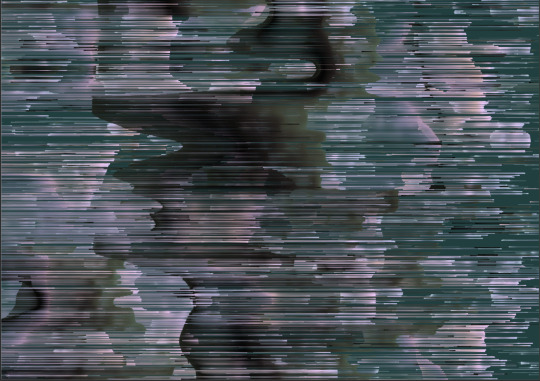
Visualising Generative Dreams / Creating Pictorial Abstraction from Text
After successfully calculating numerological values for each word of the generated text, I decided to use the values of certain parts of speech in order to drive different aspects of the design. I was aiming to create abstract images reminiscent of paint, where symbolism can be gleaned from flowing and melting shapes. The base visual design derives from a happy accident derived from playing around with noisy lines in my previous generative design experiments, that I then adapted to create these pictorial abstract landscapes. They are essential points moving on the Y-axis according to a sine wave and different noise values, with other values affecting the colour and brightness, creating the paint-like effect. In order to make the design generative, I extracted different parts of speech from the text, based on the PENN tag system, and used them to drive certain aspects of how the visuals are formed – adjectives affect the hue and brightness change, nouns impact on the noise level and number of points, and verbs affect the speed and scope of movement. Colour is perhaps the most important aspect here, as the HSB hue change and brightness level creates the smooth shape impression.
The program is designed to output multiple visual versions for the same dream - parts of speech are selected at random to drive aspects of the visuals - I chose to work in this way because dreams are fluid, open to many interpretations and often remembered in multiple ways; I thus wanted to have several outputs for the same dream, in the same way there are many ways of remembering and interpreting a dreamed experience. See examples of dreamscapes below.
0 notes
Text
Generative Text Experiments
Field Notes From Fluctuating Dimensions
Inspired by ideas of scientific documenting and archiving, but also the recordings of occult practices such as the assemblage of the grimoire as a collection of symbolical elements, this aggregation of written hyperfictions represents a playful approach to speculating on what an unknown agent may want to preserve from a world radically different than our own, whilst at the same time toying with the idea of collecting embodied previews of possible realities. It aims to serve as a starting point for a larger collection of writing and imagery focused on paving the road towards an archaeology of speculative realities.

Field Notes From Fluctuating Dimensions (2019) is, thus, an outset towards working with computation for the production of speculative thought in relation to what other worlds might be, and a first step into the direction of a multiversal practice that aims to fathom a myriad of other possible realities. Ultimately, these field notes constitute an effort to map the nomadic thought emerging out of these speculative depictions and re-arrange them into a hyperfictional narrative – perhaps even a textual map of otherworldly existences – which strives to encourage a deeper conceptual exploration of these distant places through further artistic exploration in the realms of visual and auditory speculation.
Samples:


After working with text to assemble this generative literature collection, I started thinking about using this generative Markov chain tool in relation to the personal; I became fascinated with notions of personal archiving and the search for this “unthinkable” within us - what Riddley Walker calls the “something that ain’t us”, an ideal previously explored in art. I wanted to see what these computational tools could do for remixing the subconscious itself, so I started collecting remembrances of dreams to be used as raw material for the creation of new fictions.
Samples:




The experiment proved to be very successful in terms of remixing these textual images and impressions, already passed through the filter of my own internalised archival process. I am left to wonder now what more can be done to further explore these alternate spaces emerging out of dream material, and in what ways I can further imagine other space? Perhaps visual landscapes or sound,and abstraction of these already transfused experiences.
0 notes
Text
Theory Threads // A turn towards generative literature


One of the most concise and well-suited definitions for explaining what producing fiction means is offered by Russel Hoban in his science fiction novel Riddley Walker, where the main character claims that “there is something in us that ain’t us” (2012). This phrase is perhaps the most simplistic and direct approach to revealing the existence for the potential of engaging with the realm outside the scope of objective reality – I believe that the best approach to setting paramaters for what fiction is or can be would be a reverse approach to identifying what it is not – it is not a category pertaining to the human, but rather that which exists outside of us and our concrete reality, a rupture in the way of things as they should be, which allows a glimpse into things as they could could be.

fiction as verb, fiction as the practice of an “instantiation or performance of other worlds/ potential worlds to come” – Simon O’Sullivan
“speculative fabulation” as intervention in existing reality – Donna Haraway”“fabulous “images” as a technology of immanence – Deleuze and Guattari
fiction as a progressive technology of change through artist-software interaction


hypertemporality does not concern itself with the organization and understanding of history;
it aims to grasp those alternate temporalities of the future, those paraspaces belonging to alien timescapes that manifest themselves in the realm of speculation and futurity

=> exploring a fragmented, uneven “aftertime”

hypertemporality does not concern itself with the organization and understanding of history; it aims to grasp those alternate temporalities of the future, those paraspaces belonging to alien timescapes that manifest themselves in the realm of speculation and futurity
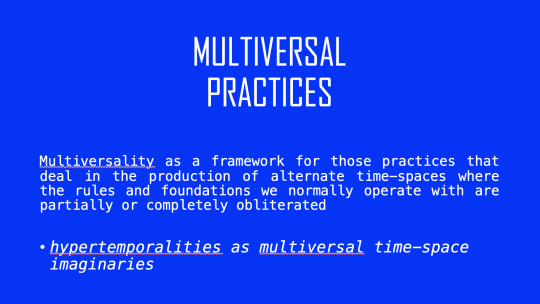
=> call forth a new theory of multiversal practices within the field of contemporary art that focuses on these liquid imaginaries and the paraspaces that they inhabit
fragmentation, multiplicity and fluidity as the defining characteristics of complex new modes of artistic and cultural production in the current post-human climate of reasoning

Meillasoux affirms himself that “continuity is the only way to render chaos sensible” and concedes that one must present within the limited scope of what can be presented – I agree here that there is no other way of providing rational access to abstract notions as thought in itself cannot be richer than reality.
This research endeavor culminates with an experiment in the creation of a computationally-driven methodological tool for creative practice focused around the idea of myth-making, which aims to start tracing out the possibilities of harnessing computation for breaking out of traditional space-time constraints and hallucinating alternate states of being.

I am looking to work with a type thought that has been elevated from an act figuration into one of emergence – an evolutionary adaptation to the current age of complexity, which in turn manifests through an impulse to build experimental probes in order to gain glimpses into what these other worlds, and ultimately, us as human agents, societal power and beings-within-the-world, might be

A call can be made here for a new type of metaphysics, a metaphysics that not only speaks of the nature of existence in one world, but rather attempts to grasp the notion of being-within-worlds – similarly to the call for an evolutionary adaptation of thought, I would like to put forward a call for a pluralist metaphysics that concerns itself with the investigation of the fundamentals of alternate worlds.

Following the belief that artist and software can hallucinate alternate imaginaries (I use the word hallucinate here due to the implicit abstract character resulting from the practical incorporation of facticity into practice), I chose to focus around language as its own kind of material to be manipulated and particularly in the sense identified by O’Sullivan as it being “one of the most powerful instruments of control” (2019) – the artefact emerging from this research is a survey of the possible splicing, folding and cutting of linguistic material, both in an effort to open up new avenues from an already existing reality and in terms of manifesting an attempt at tearing away this overarching element of control.

a text generating tool that utilises the implementation of a Markov chain algorithm with the aim of surveying what hidden meanings could be revealed from the mash-up and redistribution of narrative thought - it poses the question: what rhythms that lie hidden within the writing itself could be brought to the surface?

Thus, following in this direction of using language in itself as a worldbuilding element, an attempt was made at creating a soothsaying tool for the purposes of producing a series of field notes from imaginary paraspaces.
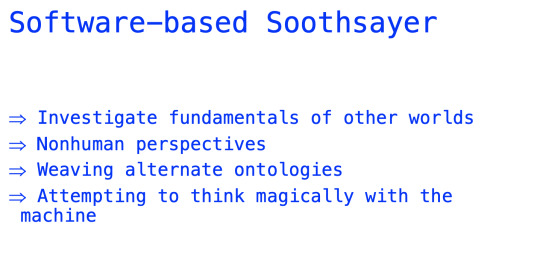
0 notes
Text
WIP 2 // Reflecting on the Outcomes

There were several drawbacks when delivering this project - a few things impacted the feeling and sense of activity that I was going for, such as the limitations of the musicMaker board, which could only output a maximum volume that was easily covered by the surrounding noise on the opening day, and the feeding process being impended by the glow in the dark stones that were getting stuck when overused - earlier testing could have helped remedy this, together with (as was suggested in the crits) implementing a timer or stronger instructions to prevent people from using the installation too aggressively. I was not happy with the overall look and feel, and the structure indeed did not live up to my own aesthetic standards - I was aiming for a more slick feel, and I felt the wooden structure took away from the delicate mouth structure. Better time organisation would have allowed for better implementing the sensor in a less apparent way as well. All in all, working on this project was a learning curve and, even though a surprising number things went in a different way then planned, it provided many lessons in terms of planning, testing and anticipating the requirements of the space, which I will be using when working on future projects. Overall, at the prototype level, even though many drawbacks were discovered, I was happy that the minimum viable product was achieved. A further implementation for this piece is being planned, taking into account all the drawbacks at this first stage.
0 notes
Text
WIP 2 // The Channeler

Conceptual Notes:
I started thinking about the idea of exchanging something for fiction, of doing an action or contributing some for of payment in exchange for pieces of fiction
One thing that worked great in my last piece was the feeling of interacting with somebody that was created because of the voice inside the phone - I really wanted to work with sound again and create this feeling of connectedness.
The initial idea came from readings around fictioning and particularly Ursula K. LeGuin’s theory of the carrier bag of fiction, this idea of collecting, of holding, of keeping
It made me think of a future entity/oracle/container - perhaps an AI that offers imaginaries in exchange for payment - in its case, food
I quite like this idea of feeding, of having to do something in order to obtain the art instead of being a passive observer
I started thinking about futurism and what future objects might be, might look like - initially as a research exercise coming out of the work done for my dissertation — I was thinking of the opposite of fossils - which in essence, are objects so far distant in time and so removed from our own mode of existence we can only guess fragments based on what remains - if you were to catapult this idea into the other direction, what would you obtain from the future? If someone sends back an object from say 2080, what will come back? What could life be like?
Extending on this exercise of future worlding and fictioning, I started thinking about writing stories surrounding these objects instead of simply creating them
This installation will build on these ideas of creating future worlds by releasing snippets of fiction to the user, in response to it being fed physically
An interesting interaction scenario is born in terms of human-machine interaction => feeding somebody is an intimate act, or perhaps related to sickness and inability to feed oneself.

The Channeller serves as a prophetic guardian of times to come, an oracle for the fragmented futures laying ahead of us, able to offer glimpses into soundscapes from distant spaces scattered across an uneven aftertime. Blending notions of fictioning, mythopoesis, science fiction, ecology and speculative narratives, this work is an experiment in constructing alternative futures and imaginaries through the creation of a ritualistic experience where the viewer and the machine are placed in an exchange-based system of revealing.
I wanted to play with ideas of affect and interacting with an object in an intimate way, creating an exchange around ideas of fiction, using snippets of fictions as a currency almost. I aimed to create a sense of spiritualism, an almost altar-like installations that reveals bits of a potential future rooted in speculative ecological futures by responding to acts of care. The spoken word elements are modelled on potential ecological outcomes - I aimed to achieve a riddle-like eerie effect, similar to the Sphynx, creating the sense of a mythological guardian of futures. The spoken word elements are paired with tell-tale sounds central to what one might
Transcript of spoken word elements and corresponding sounds:
001 Breath out, breath out, breath out, never breathe in unless you want to be wiped out (sound: rasping breath)
002 Cosmic sunbed, rays and heat, all hidden deep below ground, where the cold can still be found (sound: sun waves)
003 Atomic power knowingly unleashed, great mushroom preparing for one last feast (sound: nuclear reactor)
004 Counter goes higher and higher, invisible dots multiply into a searing fire (ssound: Giger counter)
005 Bastion of rubble collapsing, scrap mountains folding in, run from the swallowing of debris (sound: trash)
006 Immense rock gliding through the void, change of course and everything will be destroyed (sound: asteroid)
007 Heavens whirling with air and water, the eye of the spiral rises with anger primal (sound: storm)
008 Unseen danger riding on the backs of hands, organisms corrupted from the inside out (sound: hospital)
009 Vast mobs, packs, parties and crowds, physical space is about to sell out (sound: crowd protesting)
Technical Notes:
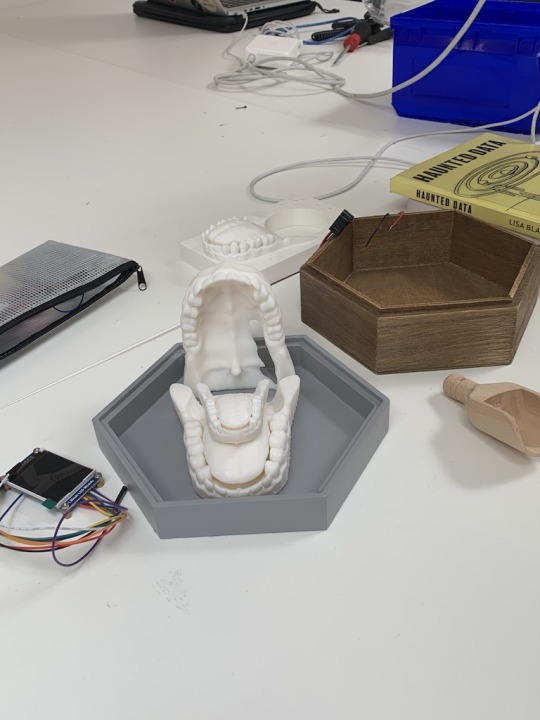
In terms of technical aspects, this project again worked towards challenging my skills of working with 3D models - although not created by me, modifying, cleaning up and repurposing the “teeth” was a valuable exercise in 3D modelling, whilst the structure was moderately challenging to build. Several issues were encountered when working with the Music Maker sound board, particularly in terms of SD card reading issues, sound ordering and volume. Further iterations of this project call for a more robust and dependable sound system. The feeding mechanism can also do with expanding, and a further iteration is planned, where a digestive systems for fictions may manifest.
0 notes
Text
Theory Threads // Reflecting on Fictioning as Practice
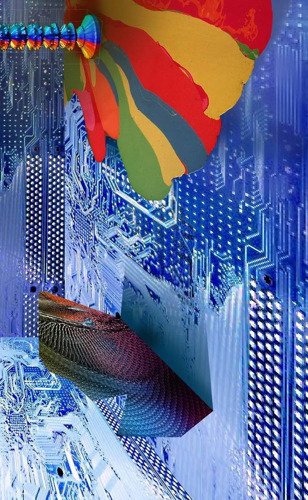
Notes and thoughts that took their final form in a 20-minute talk at the TVAd Symposium at Hertfordshire University:
The idea of computational fictioning, or more precisely looking at computation from the lens of speculative realism, science fiction and weird science. Adopting the concept of hyperchaos as a central theme and explore its weight within the art sphere and its relevance to methodology.
In After finitude Quentin Meillasoux introduces theis notion of hyperchaos as a new way of looking at the world and he defines it as both the absence and presence of disorder, and in this quality of a concept that denies contingency, it brings forward the idea that anything could change in time. Determination and chaos are the same, in the sense that they are both governed by laws. They produce different effects but disorder in itself is a type of order different from the “order of things” that we are used to. He goes further to define imagination as a manifestation of hyperchaos into the thought realm, of disorder appearing into order.
Through this dual quality of hyperchaos, it is essentially almost an ungraspable concept. Eugene Thacker describes a similar conception in his writings on the horror of philosophy. It’s worth noting that Thacker approaches the concept of horror not as a category of the literary or filmic but rather as a “privileged site” for the unthinkable grey areas where philosophical glitches occur. And he attributes this idea of the unthinkable to the world - for him, the increasingly changing hyper objects we are faced with today (Time, Space, Earth, Climate) are becoming increasingly hard to disseminate. The effort to grasp their magnitude means an effort to go beyond traditional ways of thinking.
To further explain this ontology of the unthinkable, he defines two instances of the world : the word-for-us, the world manifested in human thought, and the world-in-itself, the world outside of human cognitive capacity. But he also defines a third world existing in a liminal space, a spectral, speculative world that is the world without us, or the nonhuman world, a world existing as we know it but without a human element - this brings in an interesting look at the world of the nonhuman, that which we perceive to exist but that is not us. He exemplifies these worlds as Earth for the world for us, World as a general concept for the world in itself and the Planet as the world-without-us, a choice that bleeds into the concepts of hyperobjects and cosmotechnics.
And in thinking of this idea of a spectral world, of the grey areas where the nonhuman and the incomprehensible might find themselves; thinking about “weird science”, a science that concerns itself with the objects and phenomena previously left out of traditional science approaches. Lisa Blackman defines the category of the anomalous as a signifier for these speculative worlds, and this notion of the anomalous can be further linked to the proliferation of data today - data in itself bears symbolic and imaginary qualities and histories that are often occluded, its often haunted, as Blackman suggests, by the excess of its own storytelling - Blackman defines those concepts pertaining to the anomalous as the “incomputable” within the real, but I would like to argue that precisely computation can create affordance for these anomalous beings to exist. Today “we live with data, imagine with data, feel with data and even anticipate futures, and it only makes sense for data to play a role within speculative practices.
In discussing these notions of speculative practices, I’d like to bring forwards the idea of fictioning. First theorised by Donna Haraway as fabulation, it references a practice that is concerned with speculation around future human and nonhuman modes of existence. Simon O Sullivan then builds a framework around this idea, claiming that we need to approach fiction not as a literary category but rather as a verb, as in the act of fictioning. Fictioning in this sense of an activity is paramount to artistic practice - or any practice involving the use of imagination - we can think of any art form as a portal into a fiction, a different time, a different state of things, an alternate reality that means to reveal something to its audience.
Robert Smithson begins to flesh out this idea of fictiong as artistic methodology by claiming that that which the artist seeks is the fiction reality will sooner or later immitate - an interesting link can be created here between the act of fictiong and intervening into reality.
And we are to circling back here to Meillasoux and the concept of hyperchaos, specifically in relation to time. He claims that hyperchays is a theory of times theory. To show that time is not becoming, but rather that becoming is a case of time. This brings a chronological dimension into attempts to explore hyperchaos artistically, and suggests the idea that anything that is imagined may come into being in a certain time frame. The science fiction writer W Gibson discusses this at the concept of “atemporality”, the idea that because the proliferation of technology today all eras exist at once. And this for me is a central concept in discussing fictioning as methodology, as fictions have the power to traverse timescales, existing outside of the present.
This idea that everything is a possibility, so anything that is imagined may come into being in a certain time frame bleeds into what Meillasoux identifies as the production of little worlds with absolutely no becoming, a creation of microcosms that embody Thacker’s notion of the world-without-us, worlds with no becoming within the realm of thought.
In terms of integrating such notions into art practice we are faced with the question of how the artist can figurate something like hyperchaos?
Meillasoux starts fleshing out a pathway by exemplifying that “the painter has to show transcendence but he can’t just show it, he can just make an analogon of transcendence”. And this concept of this analogon as a sort of symbol of the incomprehensible is tightly interlinked to the the idea of the anomalous. Where the anomalous is the realm of existence, the analogon is the manifestation in the comprehensible world; we have to present in the limited scope of what can be presented - one cannot show IT, but we can show its direction, we can provide a form of rational access.
And this brings me back to fictioning, and specifically science fictioning understood again as verb, as action rather than Genre. Simon O Sullivan identifies 3 strands within the practice of fictioning, and I will be discussing two of them here in relation to science fictioning as methodology: myth-science, or the practice of constructing alternate prospects and models and mythotechnesis, concerned with the future influence of machines. And it is particularly this idea of the machine that can be harnessed to explore what Deleuze calls “the seeds of the people to come”.
When differentiating between the real and fictioning, Deborah Levitt reduces these concepts to questions:
When faced with the real world, we ask ourselves “WHAT”?
Whereas when faced with incomprehensible or the imaginary the question is “HOW”?
0 notes
Text
Reflecting on Term I
Overall, I am pleased with the outcome of this first experiment in moving towards a practice that deals with the speculative, the spectral and the futuristic. The feedback was mainly positive, with many viewers having an affective response to the piece. I plan to further develop this concept in my practice by exploring ways to deepen the speculative tendency through data sonification and generative visuals. The most important part for me, as an art practitioner, was playing around with the concept and exploring this speculative tendency in my work. The performance of this fiction through the interactive object has given rise to a new area of research interest in my art practice, an avenue that I plan to more fully explore in the terms to come - I am fascinated with this practice of fictioning new modes of existence and thinking about what ideas, objects and micro-worlds may come to life when, as artists, we aim to go beyond our current moment and look into what may be, or perhaps what already is, lying hidden between the veil of perception. Speaking about this new tendency at Transmediale 20219 was an incredibly rewarding exercise in terms of presenting and discussing my work with other practitioners, another avenue which I aim to keep exploring in the following months.

0 notes
Text
Space Telephone // Technical Notes
HACKING AN ANALOGUE PHONE :: NOTES
CIRCUITRY:
The phone I have is a classic British GPO746 replica -> this means the circuitry is slightly different from an older phone of the same type; upon opening it, there is a large PCB board that is connected to landline, headset, ringer, dial, etc. This PCB handles all of the operations of the phone. As I aim to run a portion of the components off of the Arduino in order to simulate a phone conversation, I do not think this central ‘control’ piece will be of use for my project. My aim is to get the headset, rotary dial and potentially ringer to be controlled by the Arduino, so I will start by reverse-engineering how these components work with the main board and hopefully interfacing them with my micro controller based on these observations.
Headset:
Bottom receiver has one basic microphone, 2x wires, yellow & black
Top receiver has one speaker, 2x wires, red & black
The four cables are fed into the curly cable and extended inside the case through the connection in the base
Observations:
Tops screw off easily by hand - this will make it easier to replace components
It should be easy enough to connect the speaker inside the headset to an Arduino sound output device and use the speaker to play back my own sounds.
Microphone is not required for the purposes of this project; it could, however, have nice recording applications in a later development stage or in a different project.
There is a spring system that lifts the weight of a plastic cap over a button in the inside casing of the phone; it is used to tell whether the headset has been picked up or not (switch is normally on when headset is down and released when it has been picked up.
Rotary Dial:
12x photocells hidden inside casing
2xLEDs for backlighting, inside casing
Gear system for turning the dial + small pushdown component that interacts with the switch
1x click switch with 3 connections (C,NO,NC) that is pressed when a number is keyed in on the rotary dial
Observations:
The rotary dial mechanism uses a photocell system to register the number dials and a small click switch to tell whether a number has been dialled in or not (i.e. when rotary is pushed all the way). How it works: there are two basic LEDs at the back of the circuit board; in between them and the board there is a plastic circular attachment that has a hole which allows only the photocell of the number being dialled to be exposed to light, whilst the other are left in the dark. I cannot tell straightaway how the photocells, button and LEDs are all connected to the main board - there are 11 cables on the ribbon config and 5 on the button and led one, although the button seems to connect to both configs; First step is to figure out how every component relates to each other and how power and GND are connected to the components.
Making sense of the rotary dial circuit board:
Notation:
Ribbon cable wires => R1 - R11 (left to right)
Button & LED wires => B1-B5 (up-down)
Photocells:
After carefully observing the photocell mechanism and the circuit board it is configured on, I was able to trace the ribbon cable connections to the components (photocells are marked 0,9,#,* as per the phone):
R1: *,1,4,7 R2: 5,8,0,2 R3: 6,9,#,3 R5: 1,2,3 R6: 4,5,6 R7: 7,8,9 R8: 0,#,*
Observations:
Whilst R1, R2 and R3 seem to be connected in a strange sequence, R5-R8 seem to contain the numbers in order
Both photocells have two have a + and GND connection, yet they use only 7 cables to feed information to the PCD
After considering their layout and the way they are connected, I suspect they’re arranged in a matrix fashion, similarly to making an LED matrix or to how Arduino keypads are configured. Looking at some keypad schematics seems to confirm this. I will attempt to wire these photocells to my Arduino in a matrix fashion to try and work out the format of the matrix.
LEDs:
2x basic cathode/anode LEDS
+ goes to B4 - doesn’t seem to connect to anything else but B2 (’NO’ terminal on button)??
- goes to B5 and then connects to R9
Switch button:
Pretty sure it is a momentary switch (remains active as long as it's actuated. If it's not being actuated, it remains in its “off” state) => after many Google searches, I have discovered it is a microswitch with three terminals
Potential issues: 2A 125V AC can be highly problematic when interfacing with the Arduino. It would be a hassle to feed so much power into a project for just the switch.
C,NO,NC pins - what do they mean? I assume C = connection and NC = no connection. Some research has to be done into this type of 3-terminal switch.
Is the button necessary? If I can get the Arduino to register the photocell number, is this switch a necessary component for making the installation work?
Logic of switch button and LEDS: When the switch makes a connection, the LEDs light up so the photocell mechanism can register the number - alternative idea: the light is always on (this could be a workaround if the button does not work in the end).
Button connections on circuit board:
C - connects to R11 NO - connects to B2 but to nothing further (potentially to LED power - small link on PCB, might be cut off though) NC- connects to B3 and then to R10
=> both C, NC connect to the main board via ribbon cable
Explanation of microswitches + schematic:
youtube
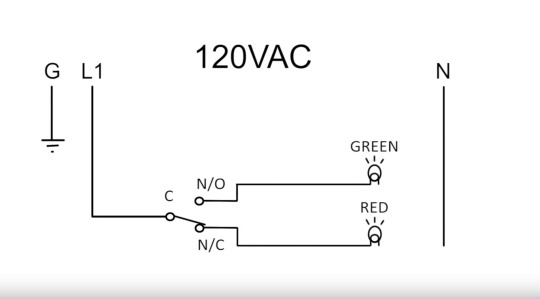
Logic of microswitch circuit: power comes in through C port and exits out the normally closed terminal; if switch is pressed, it is rerouted to normally open terminal, feeding power to a different source (in our case, the LEDs - as I was speculating before, NO connects to + for the LEDs); this is a clever mechanism as the lights would flash as the rotary motion has reached the end point (the switch acts as a trigger to register the value).
Problems left to work out: voltage! The 2A 125V notation on the switch is worrying - how is that much power even rerouted to the LEDs without burning them? I am speculating that the notation represents the limit rather than the power requirement, which would make all the sense in the world and would also mean that I could feed it 5V from the Arduino; an alternative would be to search for a similar microswitch configured especially for Arduino - could be tricky as circuit is built around the specific shape of this component.
=> Update: problem solved; after scouring some forums and consulting an electronics book, my suspicion that 125V was indeed the limit is confirmed. Last investigation before attempting to actually wire to Arduino is figuring out how the photocell matrix is laid out.
PHOTOCELL MATRIX:
I realised the photocells were arranged in a matrix format because of the keypads made to interface with the Arduino
4x rows, 3x columns
I need to investigate whether sensors can be arranged in a matrix and how to read the signals - I have limited experience with basic LED matrices only
PROGRESS UPDATE:
Switch and backlight LEDS working!!
After tinkering with the rotary system for a while, trying to figure out how it all works, I decided to re-assemble it and start testing with the Arduino. First step was to get the microswitch and LEDs working, because I needed light input to start figuring out the matrix (when in the dial casing, the photocells are covered unless the backlight is working). I fed 5V into the COM terminal, hooked up the No Connection port to a loose LED on a breadboard and the Not Open terminal to the LEDs inside the casing; as soon as I turned on the power, the breadboard LED was lit up; when the switch engaged, the breadboard LED went dark and the ones inside the casing lit up. Time to hook up the dial to the Arduino and hack interface with the matrix.
HACKING THE MATRIX:
I decided to start by looking at keypad matrices and how they work. I found a useful tutorial clearly explaining how matrix keypads work:
Keyboards use a matrix with the rows and columns made up of wires. Each key acts like a switch. When a key is pressed, a column wire makes contact with a row wire and completes a circuit. The keyboard controller detects this closed circuit and registers it as a key press. Here is a simple keyboard matrix:
Conceptual Matrix Circuit + Switch Open:

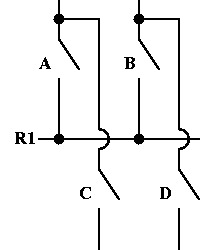
This keyboard only has 4 keys: A, B, C, and D. Each key has a unique grid location, much like points on a graph. Key A is at node C1R1, key B is at node C2R1, key C is at node C1R2, and key D is at node C2R2. In reality this is pretty useless which is why real keyboards use many more rows and columns.
In order to detect key presses, the keyboard controller will scan all columns, activating each one by one. When a column is activated, the controller detects which rows are "activated”.Now, let's say the the A key is pressed.
The matrix will look like this:
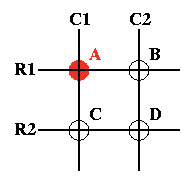
Key A corresponds to node C1R1. By going back to the circuit, we can see how C1R1 is detected.
(Schematics from https://www.dribin.org/dave/keyboard/one_html/)
Observations:
=> keypad logic seems quite straightforward; my photocell matrix has the same format as a standard phone keypad (3x col, 4x rows), but I still need to investigate whether the photoresistors can be treated the same as buttons in a keypad matrix. The PCB does not have any resistors (like a voltage divider circuit would). After a quick look at the chip on the main board in the telephone, I found this schematic:

The main board chip reads the matrix in the same row/column format as a keypad would. This means that there must be a way to compute this dial system and integration with Arduino is possible.
I tried experimenting with the photocell matrix by hooking it up to pins on the Arduino and using the Keypad library to try and read the rows and columns - this was not successful!!!, but to some extent; all keys seemed to return ‘1’, with some erratic readings of other, non-corresponding numbers that seemed random. The good part is that the Arduino can indeed communicate with the matrix; the bad part is that the results are erroneous.
I wired the pins directly to Arduino as one would a keypad. I am wondering now if resistors need to be added to create voltage dividers for the rows, or for both r/c.
Found this query on stack exchange from a person attempting the same thing:
https://electronics.stackexchange.com/questions/299879/reading-an-ldr-array-with-a-raspberry-pi?rq=1
They created a circuit diagram for the LDR matrix:

With no luck in finding many solutions to scanning matrices of analog sensors (most of the forum advice is for multiplexing LEDs - really confused about what code to write in order to identify resistance changes in this type of multiplexed array of analog sensors, I decided to focus on getting the other parts of the installation up and running and creating a contingency plan for the case in which the dial will not be functional.
Hacking the headset:
From what I can tell, the top part of the headset features a speaker and the bottom a microphone that can be interfaced with the Arduino. I won’t be using the microphone now, but it could have e interesting applications later.
I tried hooking it up to the DF Player mini in order to play some mp3 files through it. This worked!! The basis of the installation is working - there are alternatives to the dial, but the headset was essential.
Important headset notation: SPK1 on DFPlayer is GREEN headset wire, SPK2 is the RED one!
Switch button circuit to detect headset on/off:
Underneath the headset there is a spring system that puts weight on a small switch button when the headset is down, and releases it when the headset is lifted.
It only had two wires, so I used the Arduino’s internal pull-up on a digital pin in order to check whether it is being pressed or not. The experiment was successful. I can now automatically start a tune/ sound file with instructions when the headset is lifted, and halt all operations when it is down. !! I can also arrange for the phone to ring at certain time whilst the headset is down.
With the headset playback and position detection sorted, the rotary dial and ringer remain. For the ringer I’ll be needing to check how much voltage it needs to be fed in order to create sound - I could then use a relay with an AC power source to switch it on when I want it to ring.
Reflections on the dial issue and potential solutions:
For the dial problem, I will continue to try and debug it (hopefully someone at the Hatchlab may provide some info on how to scan this kind of matrix), but I have also created a contingency plan due to time restriction - if I will not be able to get number readings from the dial in time for the show, I will be laser cutting an extra layer for the front of the phone (where the dial sits) and fit it with an Arduino keypad of 4x3 similar to the dial. In hindsight, I feel like obtaining a phone with push buttons might have been a much much easier alternative. Initial tests with an old pulse-based dial worked splendidly, but unfortunately that phone is no longer available to me and I don’t know where to find an authentic 70s/80s phone apart from keeping an eye out at vintage sales.. who would have thought that an interface that is more new, even computational would pose more problems!
Apart from interfacing with the Arduino keypad rather than the original dial, I could also focus on the sound aspect of the installation (either just make the phone ring intermittently and have the installation be available only like that, when the phone “chooses” to call - ideally I would have liked to also have user input in addition to this. I can detect when a key, any key is pressed at the moment, but cannot pinpoint the specific key, which poses problems to my initial idea of having the user “call” a celestial body by inputting their coordinates or code number. Hacking the Matrix - continuation
From online forum questions, I’ve been able to glean that the matrix that I am dealing with is an array of photoresistors arranged in the format of a multiplexed switch matrix. I am still at a loss about how to approach writing my own code for this. Unfortunately, even with the help of the lab assistants, I was unable to make the dial work.
REFLECTION :: WORKAROUNDS & TIME RESTRICTIONS: I decided to implement a keyboard easily interfaced with the Arduino and modify the design of the phone a little bit - this allows for ease of use so I can focus on the visuals and the overall feeling of the piece in the remaining time. In the end, I would say it was a successful workaround that allowed for achieving a similar effect - I would have still liked to implement the tangible feeling of the dial, however this will be reserved for a secondary iteration due to time restrictions. I will also limit the first iteration to a “speed dial” system, using only single-key input, as tinkering around with the phone and reverse-engineering the way it works, as good a technical exercise as it is, has sucked up too large of a time component; I need to move on with the technical aspect now so that I can focus on creating the visual and sound elements and making sure they work together with the interface.
VISUALS AND SOUND:
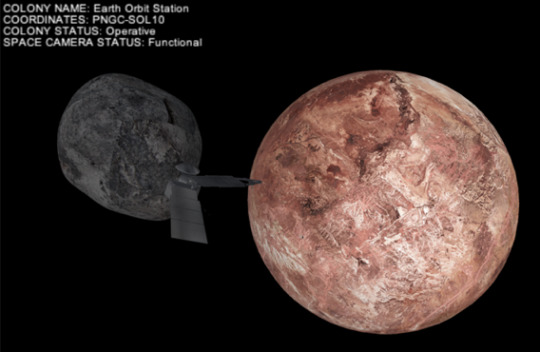
Creating the visuals was an interesting exercise in programming in 3D using Processing; the process really helped me better understand how to create and import 3D models, assemble a scene, wrap textures on an object, work with text in 3D space and create an overall feeling for a scene. The implemented sounds are planetary data sonification samples released into the public domain by NASA - further planned developments for the project include exploring my own data sonification system and experimenting with generative planet objects.
0 notes
Text
Space Telephone // Concept Notes

• The ISDS => a speculative organisation dealing with interplanetary communication in a speculative future where humans have populated other celestial objects in the universe, but communication levels have regressed drastically in terms of contacting other colonies, circling back tot the early days of the telephone. What affective elements can arise out of this repurposing of an almost archival technology for exploring a speculative future?
Exploration themes:

Looking at ways of abstracting telepresence:

=> this exploration of futuristic technologies leans heavily on notions of
telepresence, witnessing and affect in the context of space colonisation.

What could interplanetary communication look like in a speculative future where space colonisation is in its first development stage?
How will communicating across such distances differ from today’s instant-response systems?
What will the limitations be?

=> SCIENCE FICTION PROTOTYPING: a technique that utilises science fiction to describe and explore the implications of futuristic technologies and the social structures enabled by them
focuses on inventing or innovating the future
could it have applications in the art dimension?
Context and affect

How would such a technology be presented to the public? How will it be packaged and circulated?What will this one-sided “listening” feel like?
=> new mode of communication
• space colonies on five different celestial bodies
• aid of a robotic voice system, reminiscent of customer service answering machines that provides instructions
the user select a colony and dials its code in order to make a connection.

IMAGINED LIMITATIONS => the service will only allow the user to “listen in” to an environment, whilst viewing a simulated space camera feed ((space objects+ current status). There is no direct contact.
=> the absence of direct communication is directly related to the potential of affective effects of reaching over immense distances, yet not far enough in order to satisfy the immediate-response communication systems that we are used to nowadays.
=>The viewer can reach out, but not far enough to engage an actual human.
THE SOUND ELEMENTS: NASA and ESA planet data sonification samples
Links to sound sources:
https://soundcloud.com/nasa
http://www.esa.int/Our_Activities/Space_Science/Sounds_from_space
https://archive.org/details/SymphoniesOfThePlanets3
+ assisting computerised voice => reminiscent of artificial answering services encountered in CS practices, a speculative elements; how will such a technology be sold to us?
• the accompanying visuals are 3D rendered scenes of an imagined future - Earth, for example, bears the effects of the looming global warming crisis, the colony found there being located on a space station in its orbit.
The viewer is left to question where they themselves are calling from in this alternate future. The project aims to bring into question what feelings may surface when a limited form of witnessing is the only option of reaching another human space, and asks the viewer to reflect on what uncertainties such a connection may imply? Ultimately, the space phone aims anticipate a potential new mode of existence within the backdrop of interplanetary travel, by focusing on the limitations we may encounter when faced with such colossal distances to bridge, whilst also attempting to make visible the similarities that may emerge in relation to ways of communication considered obsolete today, such as the landline telephone. It perhaps comes close to what Simon O Sullivan calls “a kind of art practice that is less about the future than an instantiation - or performance - of it”.
Plan for further iterations:
• a more developed/ responsive computerised voice
• more locations to listen in on, enhanced visual narrative
• my own sonification system for planetary data
0 notes
Text
The Telephone as Affective Medium - The Forming of an Idea & Inspiration Threads
Moving forwards with my reflection on the kind of work I want to make and its conceptual, affective and aesthetic qualities, I decided to play with the idea of speculative fictions and create an object with a strong narrative that explores and alternate mode of existence. The idea of using a telephone as a medium for an installation has been with me for a while, both as an interest in exploring a media archaeology thread and an exercise in re-purposing and almost obsolete object for a futuristic, radically different, and perhaps even impossible purpose.
The initial inspiration for the project was this random photograph I randomly found whilst browsing the internet (apologies for quality):
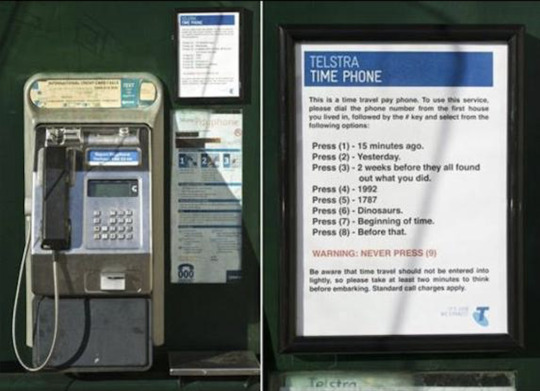
I was already toying with using the phone as a medium, but this image made me further reflect on how I can play with abstract concepts in relation to this medium. This idea of a time phone, of using the phone as some sort of magical machine that would allow calling into the past, deeper and further back until an abstract “before that”, made me reflect on what other abstractions could be formed around these nearly-obsolete objects of the everyday.
I began researching other uses of the phone as medium within art, and became fascinated with this idea of telepresence manifesting in more abstracted ways.
Notes on telepresence and telephones appearing within art history:

-“Consequences can be perceived on artistic experiences that bring the medium into public spaces, transforming them into ludic, and collective interfaces”
(‘Art By Telephone’, Adriana de Souza e Silva, Leonardo Electronic Almanac)
- Marshall McLuhan: “when an object ceases to have a function, either it passes into extinction, or it becomes a work of art”
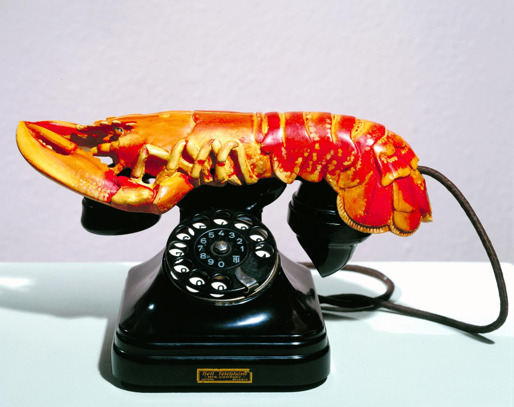

-This is a classic example of a surrealist object, made from the conjunction of items not normally associated with each other, resulting in something both playful and menacing. Dalí believed that such objects could reveal the secret desires of the unconscious. Lobsters and telephones had strong sexual connotations for Dalí.
-A found object is a natural or man-made object, or fragment of an object, that is found (or sometimes bought) by an artist and kept because of some intrinsic interest the artist sees in it
Telepresence: Virtualized Space… Obsolete Body?
-telepresence = not only the virtual presence in Cyberspace, but also the virtual presence in other physical spaces, with which we can interact and where our actions have visible and practical effects on subjects, objects and places geographically located far away from us.
-the mediated perception of a ‘temporally or spatially distant real environment’ through the means of some sort of telecommunications technology.
-"The telephone, for instance, works as a tele-presence device, because it does not carry and image or a representation of the voices: it carries the voices themselves. The telephone detaches the voices (or sonorous bodies) from the tangible body and delivers it at a distance. My tangible body is here, my sonorous body, split, is here and there.”
(Pierre Levy, ¿Qué es lo Virtual? (Becoming Virtual) (Barcelona: Paidós, 1999)
- Telepresence(presence-at a distance ) seems to be the maximum expression of the possibility of annihilating body and space.
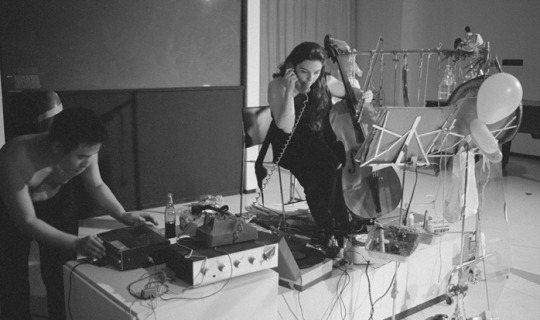

-Art by Telephone was an extremely influential conceptually driven exhibition in the MCA’s early history. Occurring at a time when the art world was moving away from minimalism and in a more conceptual direction, Art by Telephoneasked artists from the United States and Europe to communicate their ideas for artworks over the telephone to MCA curator David H. Katzive.
-MCA staff then executed the works based on the artists' oral instructions, avoiding all blueprints and written plans.
-After six weeks, all of the works exhibited in Art by Telephone were either destroyed or disposed of by the museum.
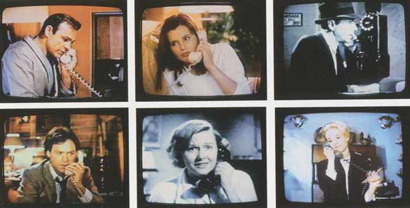

-There are elements of a generic memorial site here, in contemporary art’s desiccated language of genocide or historical crisis. But these are phones, after all, not people, and this expanse of receivers, as they were called, seems like the 1990s version of the dead letter office—a cemetery for a device whose time has past.
-Telephones offers an engaging yet complex experience: while we are all familiar with watching “the movies,” Marclay’s work blends unrelated but recognizable characters and stories into a continuous stream that upends our expectations of how stories are told and meanings are created. At times humorous, startling, tense and poignant, Telephones allows us to reflect on how we immediately — and often involuntarily — process information and entertainment in our media-dominated world.
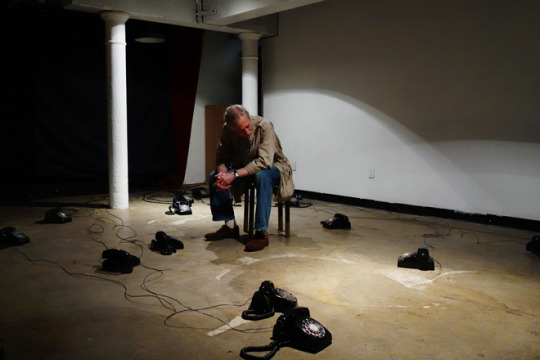

vimeo
-an installation of 15 dinging, automated black rotary phones that subtly stirs the senses.
-Their chorus is never-ending and ever-changing: at times frantic, as one phone rapidly and persistently peals as if begging for someone to lift its handset; at times soothing, as the machines chime delicately, evoking the tinkling of crystal bells.
- The phones follow computer-generated patterns based on the behavioural ones of creatures such as crickets and fireflies, which, respectively, will chirp in sync or light up in unison.
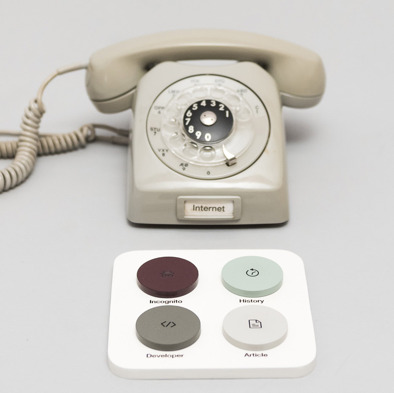


youtube
-Designed to make the "intangible processes of the internet tangible", the Internet Phone lets users "call" websites using a traditional rotary handset – which requires each digit to be selected with the turn of a wheel.
-The dial is used to input the 12-digit IP address – found in an accompanying Yellow Pages-style phonebook, which includes descriptions of each site. A robotic voice then reads aloud from the website through the phone's receiver.
-The Arduino records input from the dial, reformats it to an IP address and retrieves the HTML data. This is then parsed, and the data sent to a speech synthesiser.
-"We were excited about the rotary phone as an artefact"
-"We like the springy push-back of the rotary dial against our fingers, the clicking of the switchhook when we slam down the receiver, and overall sturdiness of the body. These are all physical interactions that the internet lacks.”



-“Vatnajokull (the sound of)” A live phone line was created to an Icelandic glacier, via an underwater microphone submerged in Jökulsárlón lagoon, an outlet of Vatnajökull. The number 07757001122 could be called from any telephone in the world, and the listener would hear the sound of the glacier melting.
- Paterson was able to drop a hydrophone into the icy lagoon where the glacier is disappearing and pick up the sounds.
-The waterproof microphone is linked to a phone and amplifier housed in a tent on land.
-Only one caller at a time can get through, which was deliberate so people can have a “one-to-one beautiful and intimate moment” with the glacier.
//CONCEPTUAL REFLECTION:
These last two projects I looked at in my art research are perhaps the most relevant - this sense of making intangible processes more tangible, looking at the rotary phone as an affective artefact, an object that somehow holds hidden meaning in its tangibility, a sort of muscle memory now, after the widespread emergence of mobile phones , the physical interaction that raises feelings of nostalgia, of a time gone past. At the same time, playing with this idea of telepresence, of existing in a space from a distance, of experiencing it remotely through sound - the affective quality of this activity, the creation of an intimate moment through tangibility and sound, the mitigation of experience through this intermediary object is what I find most fascinating. I want to look at this object as a sort of portal, where we are half-transported into another world - I am wondering now, how far can one go in abstracting the space we “teleport” to through this quality of telepresence? What feelings may arise if this nostalgia of a disused artefact is paired with a speculative future scenario? I’ve been turning around this idea of calling into space, and I mean outer space, to planets and stars, for a while. Similar to Waldo in Robert Heinlein’s book “Waldo inc”, but in reverse, instead of communicating from the outside in, we’re reaching out to the depths of space? What kind of sound would be there in space, what kind of communications? What if in a context of space colonisation, we will regress to a system similar to the landline phone, where communications are clunky, radically different from our instant-response systems today?
The affective qualities of such a scenario is something I want to explore for the deliverable this term, together with the technical challenge of reverse-engineering and hacking a technological object, further repurposing it for affective results rather than technical ones.
1 note
·
View note
Text
Post-MA Reflections
Having been asked to reflect on previous progress and current direction as part of our first few second year workshops, I took the opportunity to reflect more deeply on my own practice as a more generalised art practice, rather than a project-by-project approach. One of the drawbacks that I identified was a lack homogeneity, both in between the projects that I have delivered in the past year, and my previous and current practice. Last year was an accelerated learning curve, and a lot of the work I produced was directly fuelled by a need to learn certain programming or electronics skills - I see these as more of exercises in the area of programming, serving to giving me a new set of computational skills that I can now apply deeper meaning to.
Another lacking point would be the merging of my previous, traditional practice, with the current, computationally-driven approach I am taking - having a lengthy background in traditional and classical visual art, this tension in between my previous and current way of working is something I have struggled with for a while.
For me, the main outcomes sought on this second year of the MFA will be a deeper focus on the conceptual aspect of the work and the deeper meaning that can be conveyed with all of these technical skills, but also an investigation into how I can merge my traditional and computational skills and translate them into a more well-rounded, individualised and ultimately, strong artistic practice.
Notes on some of the concepts I am interested in exploring
Mind-map of initial concepts and ideas that I would like my art practice to tackle:

A word-soup of all of the themes and issues that interest me as an art practitioner:

Some questions for further reflections:
What do I want to say as an artist?
How will I say it?
Who do I want this work to speak to, and it what way?
What will people understand from it, what will they feel?
Why am I doing this? What conceptual, technical or aesthetic needs am I fulfilling?
Some things to develop:

0 notes